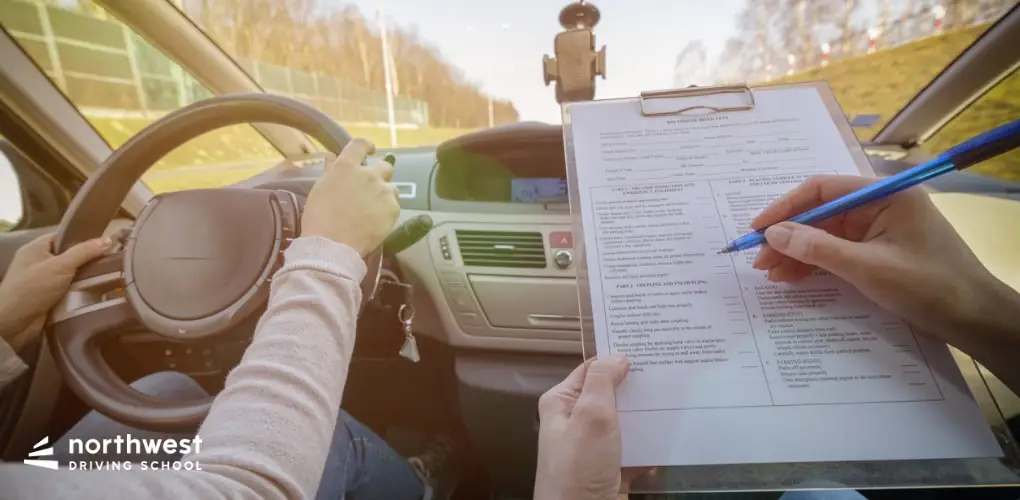- Driving School
Reasons Why People Fail the Automatic Driving Test; What Mistakes Can Occur?

The driving test can be a mix of nerves, anticipation, and precise handling as new drivers strive to show their skills. Even with preparation, even diligent candidates may need to improve in essential aspects, resulting in an unexpected failure that brings disappointment and frustration.
For individuals getting ready for their driving test, grasping the typical pitfalls and mastering the necessary skills can mean the difference between passing on the first try and needing a second attempt. This comprehensive manual delves into the reasons behind failed driving tests and offers valuable tips for those eager to excel during their initial experience behind the wheel.
Read More: What Do Most People Fail Their Driving Test On?
Table of Contents
Understanding the Driving Test
The driving test stands as a milestone for every aspiring driver. It formally evaluates your ability to operate a vehicle safely, assessing your control of the car, your knowledge of traffic regulations, and your capacity to make sound decisions in real-life situations.
Awareness of issues during a driving test enables you to anticipate challenges, prepare adequately, and reduce the chances of making mistakes. In this guide, we will discuss some errors and challenges that result in failures during driving tests while providing practical guidance on avoiding them.
The significance of the driving test
Unsurprisingly, a successful driving test is highly valuable; obtaining your license is a milestone that can unlock opportunities for work, freedom, and enriching experiences. Driving skill involves a mix of expertise, practice, and good judgment. It’s not just about operating the vehicle but making sound decisions at every twist and turn.
Common errors leading to test failure
Although driving tests may vary depending on location, mistakes often result in failing the test. These mistakes usually relate to safety, judgment, and fundamental driving abilities such as steering and maneuvering.
Read More: Reasons For Failing Driving Tests & How To Avoid Them
Driving with one hand
The practice of placing one hand on the steering wheel is frequently seen on the roads. However, this habit can be detrimental during a driving test, as it reduces your control over the car.
The importance of hand placement
Hand positioning correctly at 10 and 2 o’clock is crucial for maintaining precise vehicle control. It offers the stability needed for steering and ensures swift responses in emergencies.
When is it appropriate to drive with one hand?
In driving scenarios like reversing or moving at low speeds, it may be acceptable to drive with one hand as long as control and awareness are maintained. However, this should be an odd occurrence rather than the norm. Always keep two hands on the steering wheel during your driving test.
Implications of driving with one hand during the examination
In a testing scenario, using one hand to steer is often considered careless, resulting in potential deductions from your final score. Significantly, if the lack of control stemming from handed steering poses an actual safety risk, it could lead to an instant failure.
Crossing Hands on the Steering Wheel
As with steering with one hand, crossing your hands while turning the steering wheel is seen as a potential loss of control and can cause you to fail your test.
The proper hand positioning
As mentioned earlier, the recommended positions for teaching methods are 10 and 2 o’clock or 9 and 3 o’clock to prevent injury from airbag deployment.
Reasons for deeming crossing hands as incorrect
When you cross your hands on the wheel, your arms may get tangled during actions or stops, potentially causing a loss of control over the vehicle. It also results in a need for more precision. This may lead to unsafe and erratic steering behavior.
Impact of crossing hands-on control and observation
Shifting your hand position to cross over while steering can create spots when reaching for the wheel quickly, which could have severe consequences in situations requiring swift maneuvers.
There are ways to handle certain maneuvers when it comes to driving tests.
Parallel Parking
Parallel parking is a significant part of a driving test. This skill showcases a driver’s control and spatial awareness proficiencies when executed accurately.
The significance of parallel parking in driving tests
Parking is a component in many driving assessments, highlighting its role in assessing a candidate’s practical abilities.
Common mistakes during parallel parking
Frequent errors include grazing the curb, misjudging distances, and spending time on the maneuver.
Tips for successful parallel parking
You can improve your parking skills by practicing in your surroundings using the ‘s.p.o.t’ method (size, position, observation, time) and reversing slowly for better control.
Driving Too Slowly
Contrary to belief, slow driving can pose risks similar to speeding and can result in a failure during your driving test.
The Importance of maintaining an appropriate speed
Adhering to speed limits is crucial as driving below them can disrupt traffic flow and increase the likelihood of accidents due to evasive actions by other drivers. Driving slowly can pose a problem as it backs up traffic and causes traffic jams.
While it’s wise to drive just under the speed limit, excessively low speeds under normal circumstances are generally disapproved of unless in specific situations like heavy traffic or bad weather.
The impact of slow driving on motorists
Driving slowly, especially erratically or unpredictably, can greatly irritate other drivers and lead to tailgating, aggressive actions, or simply being disregarded on the road, putting you at risk.
Colliding with the Curb
Bumping into the curb while driving, especially while parking, indicates a need for enhanced awareness and control of the vehicle.
The significance of maintaining vehicle control
A driver who struggles to avoid hitting objects like curbs may need more judgment to operate a vehicle safely, and this lack of awareness can cause you to fail your test.
Results of hitting the curb during a test
While an isolated incident may not result in a failure, repeated collisions or those causing damage to the vehicle could signal poor driving habits that require rectification.
Methods for preventing curb collisions
Enhance your distance judgment by using cones or markers to mimic curbs. Remember to steer away if you’ve overcompensated for a curb or encountered any obstacle while reversing.
Parking inadequacies
The ability to park your car accurately and neatly is a skill evaluated during the driving test. Proper parking plays a role in the driving exam as it indicates your ability to maneuver your vehicle safely and efficiently in spaces requiring awareness and control.
Making parking mistakes, such as misjudging distances, not aligning your car properly within designated lines or occupying spaces, can result in deductions or even failure in the test.
Practice makes perfect
It’s essential to practice to ace parking maneuvers. Get familiar with your car’s dimensions, use reference points to assist you while parking, and always remember to check your mirrors and blind spots during the maneuver.
Road Rage
Road rage is a behavior that should be avoided during the driving exam since it can raise concerns among examiners about your readiness and psychological preparedness to drive responsibly.
Keeping calm and composed behind the wheel is crucial for ensuring your safety and that of other drivers and pedestrians on the road. Signs of road rage, like tailgating, excessive honking, shouting, or making gestures, are indicators of aggressive behavior that can immediately lead to failing the driving test.
The repercussions of showing road rage during the driving exam
Actions indicating road rage can lead to disqualification as they demonstrate a lack of readiness to navigate the roads safely and courteously.
Engine Stalling
When the vehicle stalls due to clutch handling or lack of coordination during acceleration, it often leads to failure in the driving test.
Significance of clutch management
Handling the clutch is crucial for acceleration and correct gearing in manual and automatic vehicles. As with other maneuvers, practicing your clutch control outside of your allotted driving lessons is an excellent way to
Common causes of stalling
Mistakes like riding the clutch, releasing it quickly, or not providing acceleration for the gear selected are frequent errors during a driving test.
Steps to recover from a stall during a driving test
Maintain composure, press down on the clutch, restart the engine, and resume driving while being mindful of your surroundings.
Book your Lessons and Ace Your Test Today!
The driving test can be nerve-wracking but is essential for evaluating your skills as a driver. You can actively strive to avoid these pitfalls by understanding why candidates often falter. Remember, practice leads to perfection. Take time to review these errors and practice maneuvers that challenge you most.
With preparation, patience, and unwavering commitment to safe driving practices, reaching your destination is 100% achievable. It’s not just about acing a test; it’s also about showing yourself and those around you that you’re prepared for the road.
With the guidance of Northwest Driving School’s instructors and a touch of perseverance, you’ll soon be on the path to becoming a self-assured driver. Our teachers are dedicated to supporting you at every stage of your learning journey, so feel free to reach out for any help or clarification you may need.


